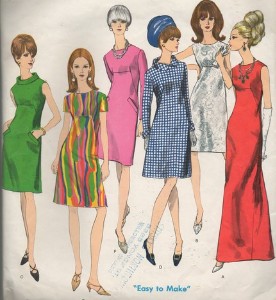TC Museum features ‘Style Tribes, Fashions from the 1960s’

TC Museum features ‘Style Tribes, Fashions from the 1960s’
January 30, 2012
In the 1960s, filled with civil rights protests, feminism and an emerging environmental movement, textiles became a way for people to set themselves apart.
What better way to display these vivacious styles than with pieces from the extensive Textile and Clothing Museum right here at Iowa State?
“Style Tribes, Fashions From the 1960s” made its debut on Jan. 19 in the Mary Alice Gallery in Morrill Hall. The exhibit highlights four of the most prevalent style tribes at the time: op art and fashion, the environmental movement and fashion, the mods and space age and professional and collegiate fashions.
The exhibit was co-curated by five undergraduate students enrolled in TC 354/554: History of European and American Dress. These five students, Kelsey Feldmann, Hanna Mosley, Carissa Drake, Madeline Pagel and Aubrey Tramontina, volunteered to serve as curators for their final project.
After individually researching their style tribes, conducting a detailed artifact analysis and searching through popular press magazines of the 1960s such as Vogue and Harper’s Bazaar, these five students now display their hard work for all to see.
Sara Marcketti, assistant professor for TC 354, commented on the success of this final project. “We have had two undergraduate curated events in the past, but both were honors students’ final projects,” she said.
“This is the first time we have had students from a class curate an exhibit. All of the students really enjoyed this project and it will be something we continue in the future.”
The exhibit includes three paper dresses and one paper bikini. Believe it or not, these garments were literally made of paper, a non-woven textile reinforced with rayon.
Marcketti commented on the impact the paper dresses had on the 1960s. “They included all kinds of imagery – from pop and op-art zigzags and stripes to walking advertisements for political candidates and consumer products such as soup, the Yellow Pages and even Time Magazine.”
“Many trend forecasting sites have anticipated the 1960s will be heavily ‘borrowed’ from in the year 2012. This exhibit gives students a great way to view the original 1960s clothing,” said Marcketti on why she thinks this exhibit will be popular among students.
The exhibit is open until April 22. People can view the clothing from 11 a.m. to 4 p.m. Monday through Friday in the Mary Alice Gallery in Morrill Hall.






